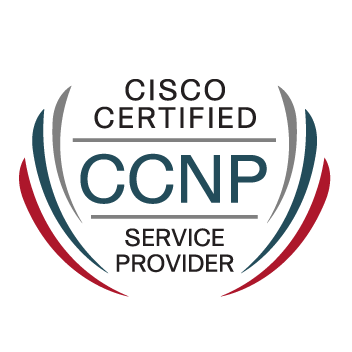- Subscribe to RSS Feed
- Mark Topic as New
- Mark Topic as Read
- Float this Topic for Current User
- Bookmark
- Subscribe
- Mute
- Printer Friendly Page
- Mark as New
- Bookmark
- Subscribe
- Mute
- Subscribe to RSS Feed
- Permalink
- Report Inappropriate Content
11-18-2012 12:24 AM - edited 03-07-2019 10:06 AM
Hi!i'm a newbie here.i can't understand the answer given in the question.how could you explain it?
best regards,Abdurahman
Solved! Go to Solution.
- Labels:
-
Other Switching
Accepted Solutions
- Mark as New
- Bookmark
- Subscribe
- Mute
- Subscribe to RSS Feed
- Permalink
- Report Inappropriate Content
11-18-2012 12:49 AM
Hi,
Because on point to point link there is no DR/BDR election. It happens only on broadcast network like fasterhernet, when multiple routers share one subnet.
This is the simplest network type for OSPF. Two routers connected via point-to-point link. For this particular network, there is no need to have DR and BDR. Why, because each router will sending updates to each other and having DR and BDR will not change the situation.
Link
http://www.davidsudjiman.info/2008/04/25/ospf-network-types-point-to-point-cisco-standard/
Please rate helpful posts.
Sent from Cisco Technical Support iPhone App
Abzal
- Mark as New
- Bookmark
- Subscribe
- Mute
- Subscribe to RSS Feed
- Permalink
- Report Inappropriate Content
11-18-2012 12:49 AM
Hi,
Because on point to point link there is no DR/BDR election. It happens only on broadcast network like fasterhernet, when multiple routers share one subnet.
This is the simplest network type for OSPF. Two routers connected via point-to-point link. For this particular network, there is no need to have DR and BDR. Why, because each router will sending updates to each other and having DR and BDR will not change the situation.
Link
http://www.davidsudjiman.info/2008/04/25/ospf-network-types-point-to-point-cisco-standard/
Please rate helpful posts.
Sent from Cisco Technical Support iPhone App
Abzal
- Mark as New
- Bookmark
- Subscribe
- Mute
- Subscribe to RSS Feed
- Permalink
- Report Inappropriate Content
11-18-2012 09:23 AM
This question combines a basic knowledge about the different networktypes in OSPF and some experience in the output of the "show ip ospf neighbor" command.
One design goal when developing routing protocols is to keep the protocol traffic as low as possible.
So, depending of the capabilities of a link (which is the connection between two or more routers), there are different ways to exchange routing data.
The most important capabilities are:
- can a router have more than 1 neighbor on a link?
- can the link transmit broadcasts?
(*)
If a link can have more than 1 neighbor, a Designated Router (DR) and (for redundancy) a Backup DR will be elected. The DR/BDR are responsible to send routing updates to all the routers on the segment. This is much more efficient in terms of bandwidth, at least when you have many routers on a subnet.
I'd like to encourage you to play a little bit in a lab environment or a simulator:
R1(config)#int f0/0
! the default network type in Ethernet is "Broadcast"
R1(config-if)#do show ip ospf interface f0/0 | i Network Type
Process ID 1, Router ID 0.0.0.1, Network Type BROADCAST, Cost: 1
! the neighbor has been elected as Designated Router
R1(config-if)#do show ip ospf neighbor
Neighbor ID Pri State Dead Time Address Interface
0.0.0.2 1 FULL/DR 00:00:30 172.16.12.2 FastEthernet0/0
! let's change the network type to Point-to-Point:
R1(config-if)#ip ospf network point-to-point
R1(config-if)#do show ip ospf interface f0/0 | i Network Type
Process ID 1, Router ID 0.0.0.1, Network Type POINT_TO_POINT, Cost: 1
! a P-2-P link doesn't need to elect DR/BDR
R1(config-if)#do show ip ospf neighbor
Neighbor ID Pri State Dead Time Address Interface
0.0.0.2 0 FULL/ - 00:00:39 172.16.12.2 FastEthernet0/0
HTH
Rolf
(*): There is also an important capability called "transitive connectivity", but let's keep it simple.
Discover and save your favorite ideas. Come back to expert answers, step-by-step guides, recent topics, and more.
New here? Get started with these tips. How to use Community New member guide

